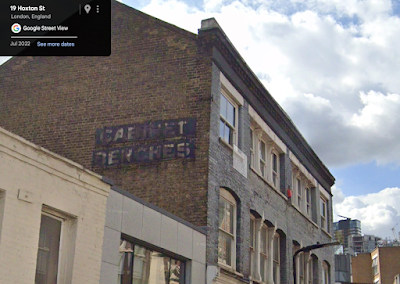Yesterday I went to the press preview of The London Museum's latest exhibition. I had my fingers crossed that it might be as excellent as their show about Fashion in the East End yet I was trepidacious that it could be sending out the wrong message as regards the rules and regs of mudlarking, something that I know about all too well having been the holder of a Port of London foreshore permit for over 17 years when I started making items from clay pipes from fragments that I found on the Thames' beaches (for walking in mud is not my thing!).
Entering the first room of the exhibition, there's some info about who the early mudlarkers were... these were poor people as good as risking their lives in the thick squelchy mud in amongst moored boats, looking for scraps to eat, lumps of coal, or items that had fallen overboard, some of which might very occasionally be worth the time and effort involved.
All well and good so far. But then the focus changes to the 'treasures' that can be found:
The next room, the largest space, is scattered with cabinets arranged around some heaps of stones and trash designed to look like areas of foreshore.
The display cases are interspersed with artworks made by modern artists, the explanation labels for these being hard to locate. I have since discovered that at least one of these artists does not hold a permit to be able to make and sell artwork from foreshore finds, as I do.
The collections of finds in this room seem like they were ideas thrown up in one of those Blue Sky meetings, like a box-ticking exercise. I'd expected to see a chronological display of glazed pottery sherds and glass as per these, perhaps some Elizabethan dress pins, rivets, nails, bottles and glass. Instead, they show us phallic items and some of the Doves Press typeface:
There is, however, a cabinet containing some parts of old leather shoes, which reminded me of the haul that I stupidly left behind on Bankside here.
What is seriously lacking is a better explanation, indeed repeat explanations, that mudlarking along the Thames is restricted to those with permits, that you can't just go 'hunting for treasure' without the right accreditation. Instead, against each showcased item, they print the names of the many mudlarkers who found them, highlighting how popular the hobby has already become.
I chatted to a few people and two individuals told me that they were now inspired to visit the foreshore. This is exactly what I feared the exhibition would promote – made all the more irresponsible because the Port of London Authority has been having a terrible time this past year trying to manage their oversubscription of permits and the many thousands of people already on the waiting list. This exhibition will surely exacerbate the problem further. The museum could have easily put repeat signs around the walls of the exhibition space explaining the restrictions involved in an effort not to make it even worse. Instead, it's 'let's go find some treasure!'
The next room is all about the mudlarkers of today and how they save and file their collected items in their studios, like mini-museums. I can't help but wonder what on earth are these people do with this stuff – do they have open days, do we get to visit?!
Within that room, there are items in drawers and cupboards with sticky hinges and flaps that I don't think will last more that a week.
The final room is all about the moon, because the Thames is tidal and, apparently, mudlarks go out treasure hunting at night time, which is something I really don't thing is a safe practice to highlight. The space is mostly filled by yet another one of Luke Jerram's suspended globes. These things are everywhere, like Anthony Gormley statues. I'd hoped that this, being about nature, might include an explanation that another reason for not damaging the foreshore's surfaces is the disruption to wildlife, the tiny flora and fauna that exists in the thin top layer. Nope.
A few of us agreed that this room and its glowing moon was some kind of afterthought as a space-filler, that they'd run out of ideas – it's a ridiculous end to the exhibition. Concerned that surely I must have missed something important, I went for another lap of all the exhibits to check and was disappointed that I had indeed seen it all.
It's clear to some of us who visited that The London Museum is here jumping on a 'let's go mudlarking' bandwagon* and focusing on the treasure hunting with what seems like a complete disregard about the ecosystems on our foreshores and the water quality of the Thames – see more at Thames21. There is also scant information about the role of the PLA, the need for permits, and the correct codes of practice, set out within the documentation that accompanies the permits.
Disappointing on many levels.
Mudlarking – Secrets of the Thames, until 1st March 2026
...........................
UPDATE, 10am Tuesday 15th April – low tide at Bankside. I counted approx 24 people on the foreshore twixt Blackfriars Bridge and Tate Modern, bending and stooping and putting things into carrier bags. These including families with colourful buckets and spades, the children gleefully digging and holding their finds aloft, in comparison with a couple of individuals who, by their apparel and demeanour, were clearly permit holders wearing thick waterproof boots and carrying trowels in the rubber-gloved hands.
*as is Southwark Cathedral , The Guildhall and The Waterman's Hall who also host occasional mudlarking events.



















































